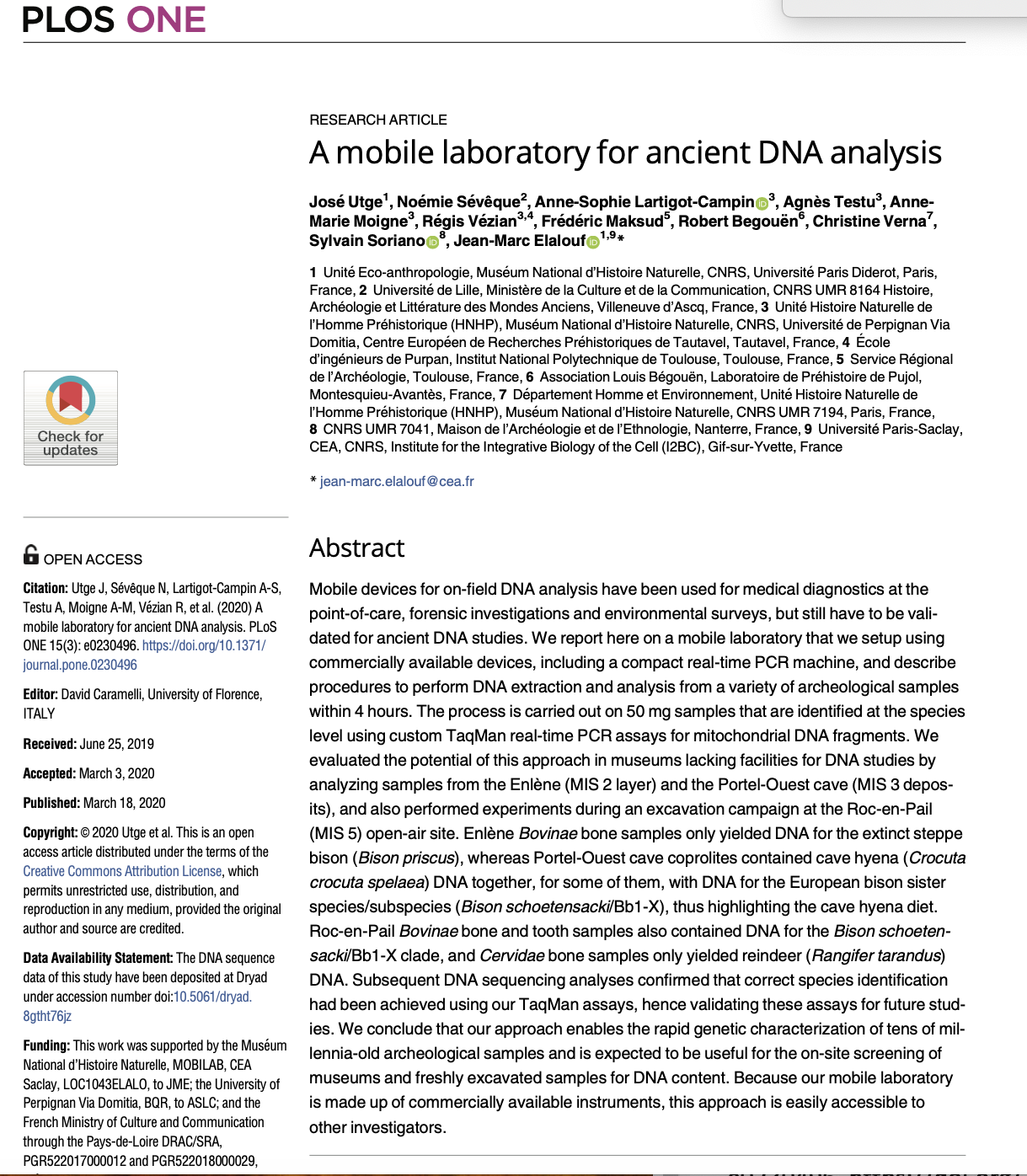
- February 18, 2021
A mobile laboratory for ancient DNA analysis
Jose ́ Utge, Noe ́mie Sevêque, Anne-Sophie Lartigot-Campin, Agnès Testu, Anne- Marie Moigne, Regis Vezian, Frederic Maksud, Robert Begouen, Christine Verna, Sylvain Sorian0, Jean-Marc Elalouf
Unite ́ Eco-anthropologie, Museum National d’Histoire Naturelle, CNRS, Universite Paris Diderot, Paris, France, Universite de Lille, Ministère de la Culture et de la Communication, CNRS UMR 8164 Histoire, Archeologie et Litterature des Mondes Anciens, Villeneuve d’Ascq, France, Unite Histoire Naturelle de l’Homme Prehistorique (HNHP), Museum National d’Histoire Naturelle, CNRS, Universite de Perpignan Via Domitia, Centre Europeen de Recherches Prehistoriques de Tautavel, Tautavel, France, Ecole d’ingenieurs de Purpan, Institut National Polytechnique de Toulouse, Toulouse, France, Service Regional de l’Archeologie, Toulouse, France, Association Louis Begouen, Laboratoire de Prehistoire de Pujol, Montesquieu-Avantès, France, Departement Homme et Environnement, Unite Histoire Naturelle de l’Homme Prehistorique (HNHP), Museum National d’Histoire Naturelle, CNRS UMR 7194, Paris, France, CNRS UMR 7041, Maison de l’Archeologie et de l’Ethnologie, Nanterre, France, Universite Paris-Saclay, CEA, CNRS, Institute for the Integrative Biology of the Cell (I2BC), Gif-sur-Yvette, France|2020|PLoS ONE|15(3): e0230496. https://doi.org/10.1371/ journal.pone.0230496
On-site observation of freshly excavated fossils and requirements of intact museum collections call for the evaluation of on-field approach for ancient DNA studies. In this study, a mobile laboratory utilising the Mic qPCR Cycler for real time PCR analysis of the mitochondrial DNA of six animal species. The Mic is highly suitable for on-field diagnostics as it is a compact and light-weight device that can also be battery powered. The mobile laboratory was designed using a real-time PCR assay that utilises TaqMan MGB probes for mitochondrial DNA of size animal species (Bison priscus, Bison schoetensacki, Ran- gifer tarandus, Cervus elaphus, and Crocuta crocuta spelaean). DNA analysis was performed on 50 mg samples from the Enlène (MIS 2 layer) and the Portel-Ouest cave (MIS 3 deposits), and also performed experiments during an excavation campaign at the Roc-en-Pail (MIS 5) open-air site. Evaluation of the method provided reliable data where contamination and specificity issues were adequately addressed: negative controls always failed to yield an amplification signal; the species for which DNA amplification was obtained are either extinct or no longer present in the vicinity of the sites and DNA sequencing carried out using the TaqMan assay primers or different primers confirmed that correct species identification had been achieved with the real-time PCR assays. As a result, the mobile laboratory enables rapid on-site genetic characterization of tens of millennia old archaeological samples.